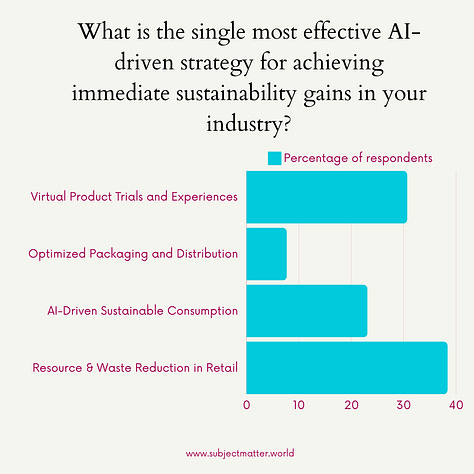The AI-powered Fashion & Beauty Revolution
Gen AI could be a game-changer for the fashion industry, adding a massive $150 to $250 billion to profits in just a few years. Although fashion is still catching up with AI, the opportunities and challenges it brings are clear in every part of the business.
By leveraging AI technologies, retailers gain invaluable insights into their customers, fostering stronger relationships and enhancing the shopping experience. This translates into highly personalised recommendations, virtual try-on options, and tailored guidance, creating seamless and satisfying interactions that foster brand loyalty.
According to Perfect Corp.’s report released earlier this year the following changes are predicted in the fashion and beauty ecosystems in the coming future:






1. Personalised recommendations, responsive customer service, resulting in improved shopping experience and strengthened consumer loyalty.
AI assistants such as Perfect Corp's SkincareGPT and BeautyGPT offer real-time beauty advice, AI skin analysis and virtual product trials through interactive conversation, making personalisation accessible on a large scale.
Similarly Estée Lauder Companies and Microsoft have teamed up to open an in-house AI innovation lab for identifying and responding to trends, informing product development and improving customer experiences.
2. AI will give rise to the next generation of immersive experiences with hyper-realistic virtual try-ons and virtual fitting rooms.
Virtual try-ons are already a thing in digital companies, like Warby Parker and Amazon. Modiface, bought by L'Oréal in 2018, is another example. They offer virtual try-ons for makeup and fashion accessories using AR.
3. AI & sustainability
AI-powered virtual trial tools will reduce the need for physical samples in the beauty and fashion sectors. These virtual trial experiences will also enable brands to provide personalised recommendations to shoppers, matching each customer with the most suitable product and reducing waste generated by returns.
AI can improve operations and supply chain processes by optimizing inventory management, predicting sales based on historical data, and reducing overstock and stock-outs. Brands like Zara and H&M already use AI to control supply chains, promoting sustainability by optimising stock levels and reducing waste. Zara also introduced AI and robotics into their retail stores to speed up online order pick-ups.
4. Generative AI will revolutionise content creation
It will enable brands to create dynamic, personalised content on a massive scale, while offering consumers the opportunity to explore new forms of creative expression and inspiration.
For example, traditional product marketing, like using high-quality images for blockbuster ads (like Michael Jordan in sneakers), is expensive and time-consuming. These images can be hard to change for customer-focused experiences. Companies often use low-resolution supplier images for manufacturing and design. These images are fast and cheap, but they aren't meant for marketing to shoppers or helping them decide to buy.
AI and CGI can create dynamic, adjustable 3D product images. By combining high-quality marketing images with technical details, companies can make accurate manufacturing calculations, add digital content, and change perspectives. These AI-generated images are high-quality and flexible, so they can be used for promotion without much help from people. The key is to switch to computer-generated content.
(*"From AI-generated marketing campaigns to AI-enhanced artwork and editing tools, generative AI will open up new possibilities for brand storytelling and consumer engagement."*Perfect Corp.)
Further reading: https://plugins-media.makeupar.com/pfweb/colorreport/The Most Influential AI Trends in Beauty and Fashion.pdf)



